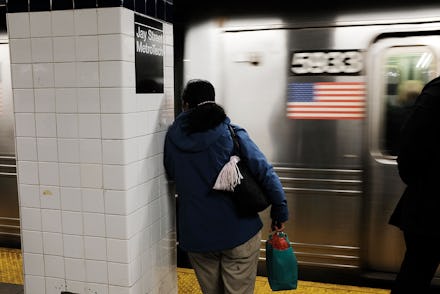The stabbing of Ann Marie Washington should call attention to rising hate crimes in public spaces

On Friday, Ann Marie Washington, a black woman, was punched in the face and stabbed on a subway platform in Brooklyn, New York City. The 57-year-old mother was on her way home from work when the assailant — described as a 5-foot-3-inch white man — allegedly attacked her and called her a “black bitch,” the New York Post reported. The next day, Washington underwent surgery for a collapsed lung as a result of her injuries, according to NBC News.
The suspect fled and was still on the loose as of Monday. The NYPD’s Hate Crime Task Force is reportedly investigating.
Reading about the attack on Washington invokes the unsettling dismay I experienced following the horrific stabbing death of Nia Wilson, an 18-year-old black woman in Oakland, California, in July, as well as other random violent attacks on black, Muslim, Latinx and LGBTQ people on public transportation all over the country.
Suspect John Lee Cowell, a 27-year-old white man on parole who was released from prison in May, is accused of killing Wilson at a Bay Area Rapid Transit station. Cowell was charged with murder days later, but Oakland officials have not categorized the killing as a hate crime. Wilson’s family and community advocates, however, contend it is.
On the Portland light rail in May 2017, another white man, 35-year-old Jeremy Joseph Christian, allegedly yelled that Muslims were “criminals” after two Muslim women passengers entered the train. “He said, ‘Get off the bus and get out of the country because you don’t pay taxes here,’” a witness told KATU-TV at the time. Three men intervened; Christian is accused of stabbing and killing two of them and wounding the third.
Christian, who was charged with aggravated murder, reportedly had a history of posting hateful anti-Muslim statements to social media.
Confirmed hate crimes in the 10 largest cities around the country, including New York City, Los Angeles, Phoenix, San Diego and Chicago, increased by 12.5% in 2017, according to a report from the Conversation. The NAACP connected the hate crimes and #LivingWhileBlack incidents with “President Donald J. Trump’s xenophobic rhetoric and racist policies.”
These recurring incidents are stirring anxiety for millions of marginalized individuals who commute to work, school and other destinations via public transportation. I am one of them. Receiving my first student MetroCard when I was 11 was like a rite of passage.
Riding the city bus to my Brooklyn public school gave me a sense of freedom and sort of made me like an adult. Even after acquiring my driver’s license and having the convenience of Uber and Lyft, the Metropolitan Transportation Authority remains my main method of navigating the five boroughs day to day.
But I’ve never felt as vulnerable or shaken riding public transportation as I do now, considering the growing reports of violent incidents similar to Friday’s. This sentiment is felt by commuters around the country, and in response, city officials and community groups are meeting to find solutions to help protect citizens who are most vulnerable to violence.
In New York City, the anti-harassment group Hollaback received double the number of harassment complaints from subway riders during the four-month period between the 2016 presidential election and the following March. “More than usual involve[d] racist, Islamophobic or anti-immigrant comments,” the New York Times reported.
A month after the election, the New York City Commission on Human Rights distributed handouts on religious discrimination and reporting harassment at eight subway stations across the city.
Safety has become a priority for Oakland’s BART officials in the wake of Wilson’s killing and other violent incidents leading up to her death. Staff presented a 12-part security action plan to BART’s board of directors in August, but civil rights advocates voiced concern over sections of the proposal that called for increased camera surveillance and police presence, given the precedence of excessive policing of African-American and immigrant communities in the city.
In Portland, a rise in hate crimes led to the February 2017 formation of Portland United Against Hate, a partnership of local civil rights groups and other community organizations, many led by people of color. Its mission is to build a citizen-led rapid-response system aimed at individuals who may not feel comfortable contacting police in such cases. In July 2017, the city of Portland allocated $350,000 to support the coalition.
Like the Islamophobic attack in Portland in May 2017, most hate crimes in the city occur in public and are rising year over year, according to police data. In 2016, there were 11 confirmed hate crimes in Portland public spaces; the number rose to 15 in 2017. So far in 2018, there have been 17 confirmed hate crimes in public spaces. Furthermore, most hate crime victims in Portland are black and do not know their offender.
Although the aforementioned initiatives by city governments and local organizations are necessary and can help provide some measure of assurance for marginalized groups concerned about their safety while using public transportation, they’re really only bandages for the bigger issues behind violence and hate crimes.
The panacea lies in the dismantling of racism, misogyny, Islamophobia, homophobia and all forms of bigotry. Until then, as a black woman who has been commuting in New York City by myself since I was preteen, nothing can defuse the fear that I — or others like me — could be the next victim of these vicious attacks.